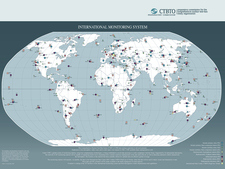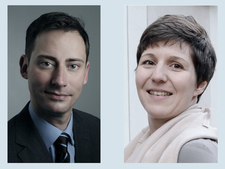-
Topics
subnavigation
Topics
Electromagnetic fields
- What are electromagnetic fields?
- Static and low-frequency fields
- Radiation protection relating to the expansion of the national grid
- High-frequency fields
- Radiation protection in mobile communication
Optical radiation
Ionising radiation
- What is ionising radiation?
- Radioactivity in the environment
- Applications in medicine
- Applications in daily life and in technology
- Effects
- What are the effects of radiation?
- Effects of selected radioactive materials
- Consequences of a radiation accident
- Cancer and leukaemia
- Genetic radiation effects
- Individual radiosensitivity
- Epidemiology of radiation-induced diseases
- Ionising radiation: positive effects?
- Risk estimation and assessment
- Radiation protection
- Nuclear accident management
- Service offers
-
The BfS
subnavigation
The BfS
- About us
- Science and research
- Laws and regulations
- BfS Topics in the Bundestag
- Links
North Korea: BfS supports Nuclear Test Ban Treaty
- On 9 September 2016 at 2.30 a.m. Central European Summer Time, the Comprehensive Nuclear-Test-Ban-Treaty Organization (CTBTO) registered earth tremors that had probably been caused by another underground nuclear weapons test in North Korea.
- As an international network, the CTBTO is aimed at tracing secret nuclear weapons tests world-wide. In the CTBTO, various international institutions have been networked that carry out seismic infrasound, underwater acoustics and radioactivity measurements.
- In the scope of this Treaty, the BfS controls the radioactivity in the air for Germany and supports the Foreign Office in the professional evaluation of the data obtained.

![]() The International IMS measuring network
Source: CTBTO
The International IMS measuring network
Source: CTBTO
On 9 September 2016 at 2.30 a.m. Central European Summer Time, the Comprehensive Nuclear-Test-Ban-Treaty Organization (CTBTO) registered earth tremors that had probably been caused by another underground nuclear weapons test in North Korea. This had happened last on 6 January 2016. It is probably the fifth test since 2006.
In the CTBTO, various international institutions have been networked that carry out seismic infrasound, underwater acoustics and radioactivity measurements. In the scope of this Treaty, the Federal Office for Radiation Protection (BfS) monitors for Germany the radioactivity in the air and supports the Foreign Office in the professional evaluation of the data obtained. The preliminary evaluation of seismic data of the event indicates a similar local origin as in January 2016.
Seismic measurements may give first indication of underground nuclear weapons test
As an international network, the CTBTO is aimed at tracing secret nuclear weapons tests world-wide. Several dozens of networked measuring stations world-wide are capable of detecting slightest traces of radioactivity in the air. Other stations measure seismic signals. On the Schauinsland mountain near Freiburg, the BfS operates the only highly sensitive measuring station in Central Europe. On a daily basis, air samples are taken there and analysed with highly sensitive measurement technology.
If radioactivity was released in the current nuclear weapons test, this could only be detected at one of the nearest CTBTO measuring stations in the Asian region. Due to the large distance, it is unlikely that the Schauinsland measuring station will register traces. Given that it was an underground explosion, it can be assumed that the amount of radioactive substances possibly released is so small that they do not pose any health risk to persons travelling to the Far East region.
The seismic measurements registered now may give a first indication of an underground nuclear weapons test. After a certain time lag, radioactive noble gases produced during a nuclear weapons test can reach the atmosphere through the ground. A final distinction between a chemical and nuclear explosion can only be made after radioactive fission products have been detected by one of the measuring stations. There is evidence suggesting a nuclear explosion.
World-wide monitoring system
With the help of the signatory states, the CTBTO - which is headquartered in Vienna – is currently setting up a world-wide monitoring system with a network of 321 measuring stations. It is capable of detecting, identifying and also localising a nuclear explosion at every place on earth with a high degree of probability. This system is based on
- 170 seismographs in the ground,
- 11 underwater microphones in the oceans,
- 60 infrasound microphones in the atmosphere, and
- 80 trace survey stations for radioactivity in the air.
Germany operates five CTBTO stations: Two seismic, two infrasound and one radioactivity measuring station.
State of 2016.09.09



